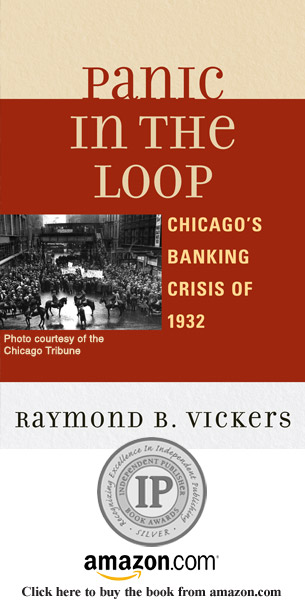 Panic in the Loop
Panic in the Loop
Chicago’s Banking Crisis of 1932
“Rarely has the case for transparency in the regulation of banking been made so well. It is hard to imagine that the bankers that caused the Chicago panic of 1932 would have been so brazen or the regulators so slow to stop them if their actions had been quickly made public.”
—Eugene N. White, Rutgers University
Relying on a broad array of records used together for the first time, Panic in the Loop reveals widespread fraud and insider abuse by bankers – and the complicity of corrupt politicians – that caused the Chicago banking debacle of 1932. It provides a fresh interpretation of the role played by bankers who turned the nation’s financial crisis of the early 1930s into the decade-long Great Depression. It also calls for the abolition of secrecy that still permeates the bank regulatory system, which would have prevented the Enron fiasco and the financial meltdown of 2008.
During Chicago’s panic in June 1932, bank failures reached epidemic proportions when forty-two banks collapsed . Panic in the Loop proves that each and every bank that failed did so because of massive insider abuse and fraud. Bank officers and directors engaged in illegal and unsound practices that encumbered every one of thebanks with reckless loans and unsafe securities investments, which no prudent management would have made. Playing central roles in the banking debacle were Charles Dawes, the former vice-president of the United States, and utility tycoon Samuel Insull, as well as Jesse Jones and other officials of the Reconstruction Finance Corporation who bailed out the Dawes bank.



